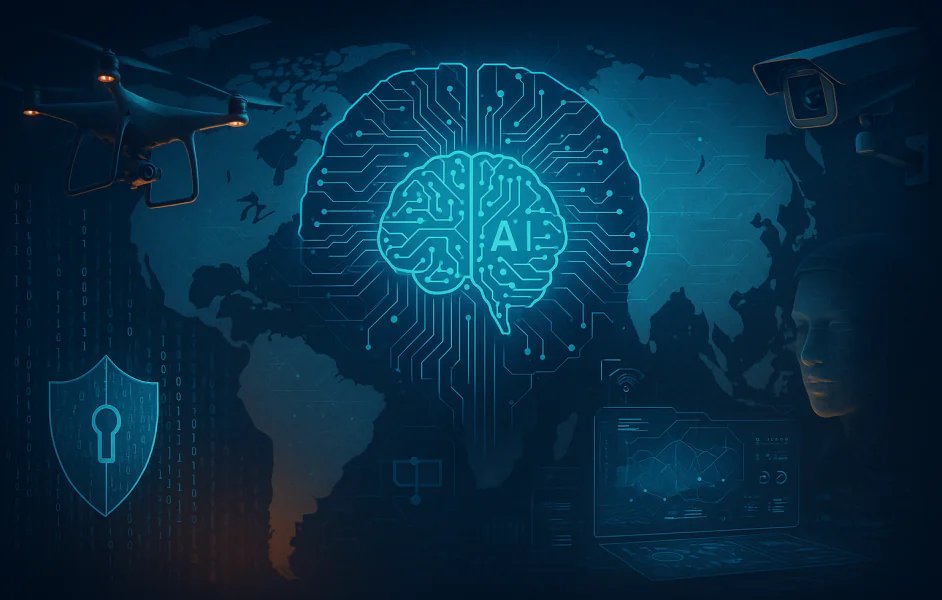2025 Highlights: The U.S. Semiconductor Industry in Flux
This year has already proven to be eventful for the U.S. semiconductor sector.
The semiconductor industry is at the forefront of the U.S.’s ambition to excel in the “AI race.” Notable changes include Intel’s appointment of Lip-Bu Tan as CEO, who is on a mission to reinvigorate the company, and the failed proposal by Joe Biden to implement comprehensive AI chip export regulations.
Let’s break down the key events from the first half of 2025.
June Highlights
Intel Welcomes New Leadership
June 18 – Intel has appointed four new leaders aimed at restoring its status as an engineering-centric company. This includes appointing a new chief revenue officer and several prominent engineering roles.
Intel to Downsize Workforce
June 17 – Intel is set to lay off a significant portion of its Foundry staff starting in July, with reductions expected between 15% and 20%. These reductions align with CEO Lip-Bu Tan’s vision to streamline operations.
Nvidia Excludes China from Financial Forecasts
June 13 – Nvidia is adjusting its expectations, as CEO Jensen Huang announced that the company will omit the Chinese market from future revenue and profit outlooks due to ongoing U.S. export restrictions.
AMD Expands Talent Pool
June 6 – AMD has enhanced its expertise by acqui-hiring the team behind Untether AI, which specializes in AI inference chips, as part of its strategy to bolster its AI initiatives.
AMD Targets Nvidia’s Market Share
June 4 – Continuing its acquisition spree, AMD secured AI software startup Brium, focused on optimizing AI software for diverse hardware, highlighting the competitive landscape in the AI sector.
May Developments
Nvidia Unpacks Financial Impact of Export Rules
May 28 – Nvidia revealed that U.S. licensing requirements have cost the company $4.5 billion during Q1, predicting an $8 billion revenue hit in Q2 as a result of these new regulations on its H20 AI chips. Read more.
AMD Acquires Enosemi
May 28 – AMD continues its aggressive acquisition strategy by acquiring Enosemi, a silicon photonics startup, to enhance its capabilities in data transmission technology critical for the AI era. Discover the details.
Rising Tensions: China and the U.S.
May 21 – In response to the U.S.’s warning about Huawei’s AI chips, China’s Commerce Secretary issued a statement threatening legal action against companies enforcing these export restrictions. Full story here.
Intel’s Non-Core Units Under Review
May 20 – Intel’s CEO Lip-Bu Tan is reportedly shifting focus to spin off non-core business units, aiming to streamline operations and enhance efficiency. Learn more.
Biden Administration’s AI Diffusion Rule Rescinded
May 13 –Just days before its implementation, the U.S. Department of Commerce rescinded the AI Diffusion Rule, with intentions to provide new guidelines in the future amidst ongoing tensions regarding Huawei’s AI chips.
April Highlights
Anthropic Supports Chip Export Restrictions
April 30: Anthropic has reinforced its support for U.S. chip export restrictions, suggesting modifications to the proposed Framework for Artificial Intelligence Diffusion aimed at tightening controls on Tier 2 nations. Explore the details.
Intel’s Significant Layoffs
April 22: In advance of its earnings call, Intel announced plans to cut over 21,000 jobs, part of a strategic push to streamline management and bolster its engineering focus.
New Export Regulations from the Trump Administration
April 15: Nvidia’s H20 AI chip faced new export licensing requirements, leading to potential $5.5 billion charges expected in their upcoming fiscal quarter.
Nvidia and Export Controls
April 9: Reports indicated that Nvidia’s CEO Jensen Huang engaged with Donald Trump to seek relief from further chip export restrictions, potentially in exchange for investments in U.S. AI data centers.
Alleged Intel-TSMC Partnership
April 3: Intel and TSMC reportedly are in talks to form a joint chipmaking venture, although both parties have opted not to confirm the agreement as of now.
Intel’s New Initiatives
April 1: CEO Lip-Bu Tan announced plans to spin off non-core assets and launch new products tailored to customer needs in the semiconductor realm.
March Updates
A New Era for Intel with New CEO
March 12: Intel appointed Lip-Bu Tan as CEO, marking a new chapter focused on engineering excellence within the company.
February Developments
Intel’s Ohio Chip Plant Delay
February 28: The anticipated opening of Intel’s first chip fabrication facility in Ohio has been delayed again, with the completion now pushed to 2030. Learn more about the timeline.
Senators Push for Stricter Chip Export Controls
February 3: U.S. senators, including Elizabeth Warren and Josh Hawley, urged the Trump administration to enhance restrictions on AI chip exports, specifically targeting Nvidia’s H20 chips. Full letter available here.
January Events
DeepSeek’s Game-Changing AI Model
January 27: DeepSeek, a Chinese AI startup, disrupted the market with the launch of its open R1 “reasoning” model, generating significant interest and concern in both AI and semiconductor sectors.
Biden Proposes New Chip Export Limits
January 13: In his final week as president, Joe Biden recommended extensive new restrictions on U.S.-made AI chips, introducing a three-tier export structure that impacts various nations differently.
Anthropic Discusses Export Controls
January 6: Dario Amodei, co-founder of Anthropic, publicly supported existing AI export regulations while advocating for even stricter controls to maintain U.S. leadership in AI. Read the op-ed.
Sure! Here are five FAQs about the US semiconductor market in 2025:
FAQ 1: What is the current status of the US semiconductor market in 2025?
Answer: In 2025, the US semiconductor market is experiencing significant growth, fueled by rising demand for advanced technologies such as AI, IoT, and 5G. Major investments in domestic manufacturing and research are reshaping the industry’s landscape.
FAQ 2: How has government policy affected the semiconductor market?
Answer: Government policies, including the CHIPS Act, have provided substantial funding and incentives to bolster semiconductor manufacturing in the US. This aims to reduce dependency on foreign sources and enhance national security.
FAQ 3: What challenges does the US semiconductor industry face in 2025?
Answer: The US semiconductor industry is grappling with challenges like supply chain disruptions, increasing competition from global markets, and the need for skilled labor. These factors can impact production rates and innovation.
FAQ 4: How has the supply chain evolved by 2025?
Answer: By 2025, the US semiconductor supply chain has become more localized, with an emphasis on resilience against global disruptions. Companies are investing in domestic facilities and fostering partnerships to enhance supply chain security.
FAQ 5: What role does innovation play in the US semiconductor market in 2025?
Answer: Innovation is a key driver in the US semiconductor market, with companies focusing on next-generation technologies such as advanced fabrication techniques and sustainable manufacturing processes to meet the evolving demands of various industries.










